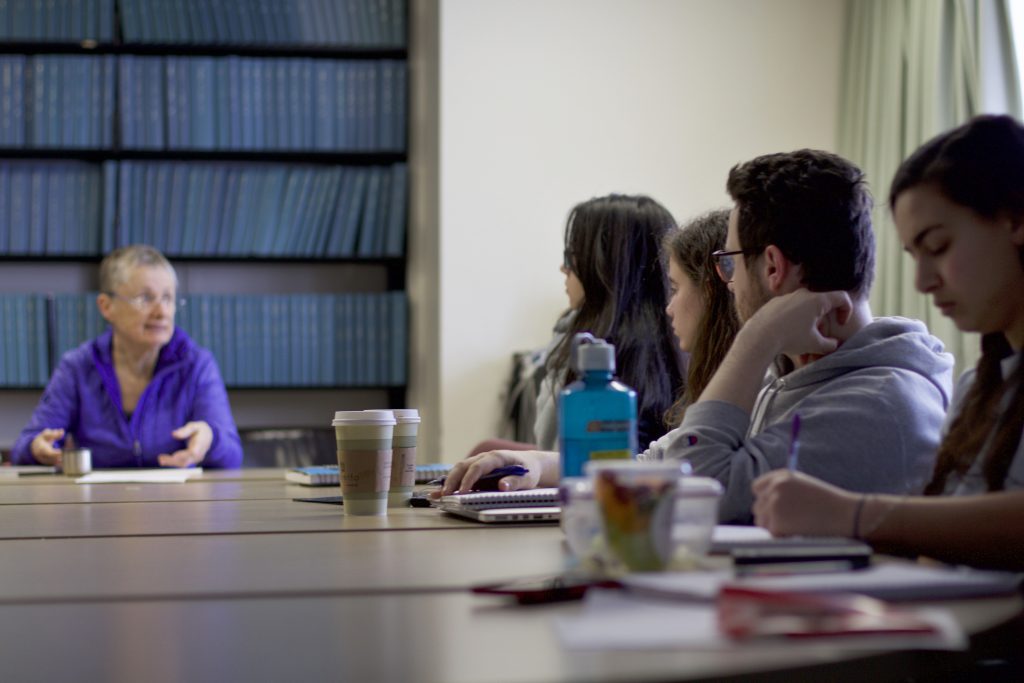
Jeffner Allen’s performance art class is designed to showcase one-of-a-kind moments — and make people think about them.
Allen, a professor in the philosophy department whose academic focuses extend to the Africana studies, Asian and Asian American studies and women, gender and sexuality studies departments, teaches a class called Africana studies 480S: Feminist and Diasporic Performance Art.
There are a variety of different mediums through which performance art can take place, and Allen says one of the class’ goals is to expose students to the various forms.
She said a local civic celebration, poetry, walking through nature, dance, film and many other things can become a performance. Their ambiguity leads the viewer to reflect, question and interpret the performance.
“Hopefully, if it works, they’ll have some sort of emotional response or unresolved quandary,” she said. “Performance art is more like a process, and it doesn’t really give a firm answer to anything.”
The class mostly consists of a daily, themed discussion and project sharing. These projects can be in any medium, and are inspired by the material that students study in the class, on different performance artists and other topics.
“They can either respond to it directly or take what they found from that, interpret it and place it in a different sphere,” Allen said. “That’s one of the really exciting moments of the class, because then you can talk about the work in conjunction with the other performers that are renowned that we watch.”
Part of the uniqueness of this course comes from the immediacy of the work that is created.
“Some aspects that most performance art shows is that it is an event that happens in the moment,” Allen said. “It’s unrepeatable, not only because the event itself would be performed differently each time, but because the performance also includes the reactions of the viewers.”
The class focuses on some performance art pieces that are expressly feminist, and there is also a focus on the African and Asian diaspora. Allen said this is to show performance art in different contexts.
“Because the angle is feminist and diasporic, the class doesn’t really stay with any single definition, but performance art keeps unfolding as the class continues,” she said. “It’s a small intersection with a fleeting moment, but it is full of potential interpretations.”
The performance art movement itself began to emerge in the late 1960s, and Allen’s interest has been growing since then.
“Spontaneously, I started following different performers,” she said. “It was almost like street art or popular-culture art, but out of that, many of those people have become famous artists.”
When creating the class, Allen said she thought about the atmosphere that she wanted it to have, informed by her interest in the movement.
“I actually developed it because I wanted a class where placing different mediums in conversation with each other would be the norm,” she said.
Allen said throughout her years of teaching the class, it has progressed the most in terms of technology. Students use technology in their performances, as well as a tool to study other artists online. The most important message Allen hopes her students take away from the class is that it is important to question one’s beliefs and assumptions, as well as to connect with others.
“A lot of the performance art class is about communication and expression,” she said. “It often opens up new possibilities.”


